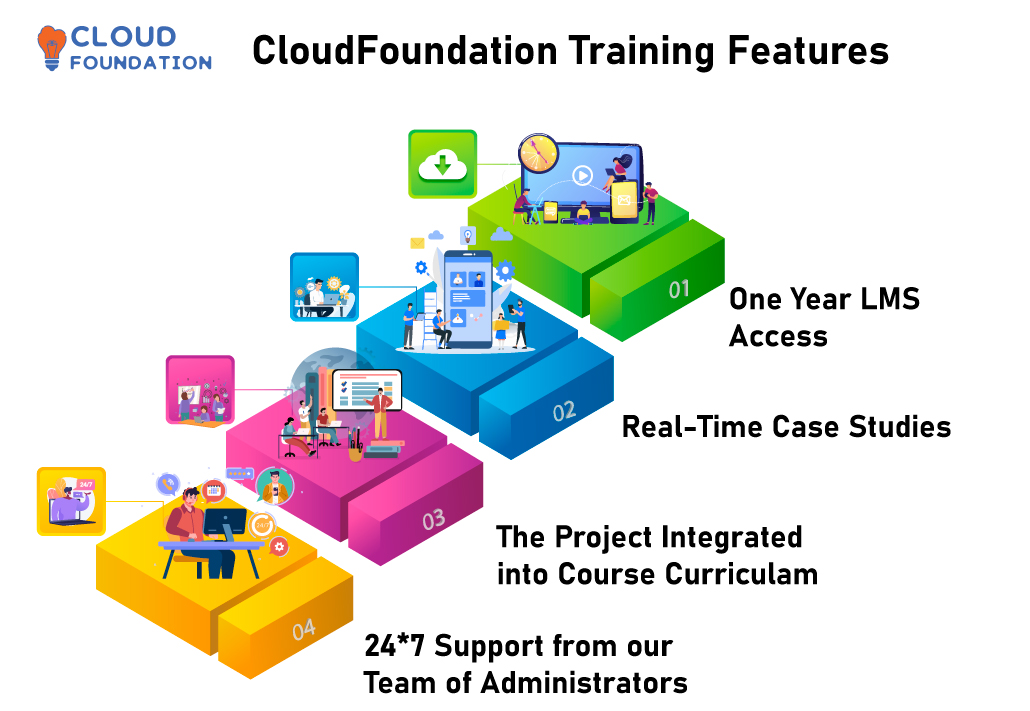SAP Fico Training – The Best SAP Fico Course
⏰24 hours | ▶️ 24 Videos | 📣 9425 Participants | 🎓 3743 Reviews | 4.8 ⭐⭐⭐⭐⭐
Choose a Plan that Works for You
Self Paced
- Advanced sessions
- Interview Q&A
- Free study Materials
- Premium Technical support
Instructor Led Live Training
- Live Instructor
- Advanced sessions
- Interview Q&A
- Premium Technical Support
Corporate Training
- Live Instructor
- Advanced sessions
- Interview Q&A
- Premium Technical Support
Upcoming Batches EST
Weekday
| July 10(1 HR A DAY) |
| 07:00 PM PST |
| Enroll Now → |
Weekday
| July 29(1 HR A DAY) |
| 07:00 AM PST |
| Enroll Now → |
Weekend
| July 27(1 HR A DAY) |
| 06:30 PM PST |
| Enroll Now → |
Upcoming Batches IST
Weekday
| July 11(1 HR A DAY) |
| 07:30 AM IST |
| Enroll Now → |
Weekday
| July 29(1 HR A DAY) |
| 07:30 PM IST |
| Enroll Now → |
Weekend
| July 28(1 HR A DAY) |
| 07:00 AM IST |
| Enroll Now → |
Course Description
SAP FICO, which is commonly known as Financial Accounting and Controlling, is open to all who are interested in a successful career in finance.
Because it provides students with an in-depth grasp of the principal financial procedures and best practices utilized in contemporary corporate settings, SAP FICO is a course that is extremely popular among finance professionals and individuals who aspire to hold senior positions in the finance industry.
This SAP FICO course will take you through the procedures of financial accounting as well as managerial accounting, all of which are essential to the process of making intelligent business decisions.
The themes of core modules are discussed throughout the SAP FICO training course. These modules include the general ledger, accounts payable, accounts receivable, asset accounting, cost element accounting, and cost centre accounting.
There is a high demand in the market for the SAP FICO technology and this course can mainly learn by Finance and Accounting professionals, Business Analysts, MBA students, IT professionals and Entrepreneurs too
You will be introduced to more advanced ideas, such as profit centre accounting, internal orders, and profit analysis, during the course of this class’s term.
You will have the opportunity to gain practical experience with SAP software, which is frequently utilized by financial specialists working for industry-leading companies.
Through the completion of this course, you will be equipped with the knowledge and abilities necessary to manage a wide variety of financial tasks, including but not limited to financial analysis, report writing, budget management, and cash flow monitoring.
After you have finished registering for the CloudFoundation, you will have access to the SAP FICO learning lessons that are offered there.
This SAP FICO certification course will assist you in extracting and developing your abilities with more effort, and it will also make it easier for you to go along your career path toward SAP FICO.
You will also learn how to combine financial data with data from other departments during your online training with SAP FICO.
Organization can easily ignore the risk decisions because we will be able to make decisions that are more informed and will bring the business closer to achieving its goals.
If You are successfully complete this course will be given an advantage over their rivals in the race to become successful SAP FICO professionals.
You will significantly improve your credentials and position yourself to command a higher salary if you sit for the SAP FICO certification exam.
The CloudFoundation will offer you with an LED- Instructor to explain each topic clearly, and you will then get technical assistance in solving all of your doubts, which will be available 24/7, and you can access technology-related blogs.
This helps you to fully learn each topic. You will get lifetime access to the SAP FICO training videos after completing the course.
By this SAP FICO course description, I think you got a clear overview of SAP FICO and still you have any doubts you can contact to CloudFoundation support team.
Do register and explore your carrier path towards the SAP FICO.
All the best!!

Course Content
1.Define Company
- Define Credit Control Area
- Edit, Copy, Delete Check company code
- Define Business Areas
- Maintain Controlling area
- Assign Company code to Company
- Assign Company code to Credit Control area
- Assign Company code to controlling area
2.Financial Accounting
- Financial Accounting Global Settings
- Assign Company code to Fiscal year Variant
- Define Variants for open posting periods
- Open and Close Posting periods
- Assign Variants to Company code
- Define Document types
- Define Tolerance groups to Employees
- Maintain Field Status Variants
- Assign Company code to Field Status Variants
- Define Maximum Exchange Rate Difference per Company code
3.Cross company code transactions
- Prerequisites for Cross company code transactions
- Clearing accounts for Cross company code transactions
- Clearing accounts for Cross company code transactions: Example
- Displaying Cross company code transactions
- Changing Cross company code transactions
- Reversing Cross company code transactions
- Posting business transactions in General Ledger Accounting
- Entering business transactions in General Ledger Accounting
- Entering G/L Account line items (General Ledger)
- Required entry fields for G/L account line items (General Ledger)
- G/L account number (General Ledger)
- Additional account assignment (General Ledger)
- Additional data for G/L account line items (General Ledger)
- Posting valuation differences manually
- Carrying out transfer posting
- Posting documents in General Ledger accounting
- Document parking enjoy transaction
- Parking documents – enjoy transaction
- Posting parked documents- enjoy transaction
- Creating screen variants- enjoy transaction
- G/L Account posting- enjoy transaction
- Entering G/L Account Documents- enjoy transaction
- Editing line items- enjoy transaction
- Hold Document
- Sample Document
- Recurring Document
- Reversal Document
- Open item management
- Posting with clearing
- Posting G/L account documents- enjoy transaction
- Assign Country to Calculation Procedure Tax
- Check and change settings for tax processing
- Define tax codes for Sales and Purchases
- Check recipients’ types in Withholding tax
- Define business place
- Maintain Tax Due Dates
- Define Withholding tax type for invoice posting
- Define Withholding tax type for Payment posting
- Define Withholding tax codes
- Define formulas for calculating withholding tax
- Maintain Surcharge Calculation Methods
- Maintain Surcharge Tax codes (Separate Tax Codes)
- Assign Withholding tax types to company codes
- Activate Extended Withholding Tax
- Define Accounts for withholding tax to be paid over
- Specify Document type for Journal Vouchers in India
- Specify Document type (Accounts Payable) in Remittance Challan
- Specify Document type (Accounts Receivable) in Remittance Challan
- Maintain Number Groups
- Assign number ranges to number groups
- Maintain number ranges
- Maintain number groups and SAP Script forms for withholding tax certificates for vendors and customers
- Posting of withholding tax certificates from customers
- Assign programs for correspondence types
General Ledger Accounting
- Edit Chart of accounts list
- Assign Company code to Chart of Accounts
- Define Account group
- Define retained earnings account
- Maintain Work lists for displaying balances
- Define document types for Enjoy Transaction
- Define accounts for Exchange rate differences
- Define interest calculation types
- Prepare account balance interest calculation
- Define reference interest rates
- Define time-based terms
- Enter interest values
- Define reasons for reversal of documents
- Define valuation methods in foreign currency valuation
- Prepare automatic postings for foreign currency valuation
- Define Financial statement versions in documenting
- Define accounts for materials management
- Prepare revenue account determination
4.Accounts Receivable and Payable
- Preparations for creating customer master data Define account groups
- Create number ranges for customer accounts
- Assign number ranges to customer account groups
- Preparations for creating Vendor master data Define account groups
- Create number ranges for Vendor accounts
- Assign number ranges to Vendor account groups
- Maintain Terms of Payment
- Define accounts for cash discounts taken
- Define accounts for lost cash discount
- Define accounts for overpayments / underpayments
- Define accounts for rounding differences
- Define accounts for Bank charges
- Define reason codes for manual outgoing payments
- Define accounts for payment differences (manual outgoing payments)
- Setup all Company codes for Payment transactions
- Setup paying company codes for payment transactions
- Setup payment methods for country for payment transactions
- Setup payment method per company code for payment transactions
- Setup bank determination for Payment transactions
- Assign payment forms for payment method in company code
- Define number ranges for checks
- Check void reason codes
- Define Payment block reasons
- Define Vendor tolerances
- Define reconciliation accounts for customer down payments
- Define alternate reconciliation accounts for down payments for vendors
- Define alternate reconciliation for Customers
- Define alternate reconciliation for Vendors
- Define accounts for automatic offsetting entry
- Interest Posting A/R Calculation of interest on arrears
- Interest on Arrears calculation Vendors
- Assign forms to interest indicators
- Define sender details for interest forms
- Assign permitted credit control areas to company code
- Define risk categories
5.Bank Accounting
- Define House Banks
- Create and assign business transactions
- Define posting keys and posting rules for manual bank statement
- Define variants for manual bank statement
- Define global settings for electronic bank statement
- Define alternative reconciliation accounts for bill of exchange receivable
- Define accounts for bill of exchange transactions
- Prepare bill of exchange charges statement
- Define bank sub accounts when presenting to bank
- Assign payment method to bank transaction
- Define alternative reconciliation account for bill of exchange payable
6.Asset Accounting
- Assign Chart of Depreciation to company code
- Specify Account determination
- Create screen layout rules
- Define number range interval
- Define asset classes
- Define how depreciation areas post to general ledger
- Assign GL accounts
- Assign input tax indicator for nontaxable transactions
- Specify Financial statement version for asset reports
- Specify document type for posting the depreciation
- Define Depreciation areas
- Specify transfer of APC values
- Specify transfer of depreciation terms
- Determine Depreciation areas in the asset class
- Specify rounding of net book value / depreciation
- Specify depreciation areas for group assets
- Specify asset classes for group assets
- Define base methods
- Define multi-level methods
- Maintain period control methods
- Maintain depreciation key
- Define screen layout for Asset master record
- Define screen layout for asset depreciation areas
- Specify entry of Net Book Value
FAQ’s
❓What is SAP FICO Training?
✅The major goal of the training is to educate participants how to use SAP’s Finance and Controlling (FICO) module. This course covers a variety of subjects, including financial accounting, management accounting, financial reporting, and integration with other SAP modules.
❓What is the importance of SAP FICO Training Course?
✅SAP FICO is a crucial module in SAP ERP, which handles an organization’s financial and accounting activities.
The SAP FICO training course covers general ledger accounting, accounts receivable and payable, bank accounting, asset accounting, and cost controlling in detail.
It also teaches how to connect these procedures with other modules for a more effective financial management system.
Finance and accounting professionals need this training to stand out in the job market and progress their careers.
❓Why SAP FICO?
✅ SAP FICO is a important SAP ERP module. The Financial data is managed by it and used to make strategic company choices. Businesses need SAP FICO for its precise and real-time financial data.
SAP FICO integrates general ledger, accounts payable and receivable, cash management, and asset accounting to provide firms a complete financial picture. Making educated and timely judgments improves efficiency and production.
❓Which Software does SAP FICO uses?
✅SAP FICO (Financial Accounting and Controlling) leverages SAP ERP for financial and accounting procedures.
Integration with SAP Sales and Distribution, Materials Management, and Production Planning is also possible. Standardized interfaces allow integration with non-SAP applications.
❓Is SAP FICO Demanded?
✅ Yes, Due to its importance in SAP’s ERP software, SAP FICO (Financial Accounting and Controlling) is in great demand.
Many firms, particularly big ones, utilize SAP to handle their financial procedures, hence SAP FICO experts are always needed.
❓Is it easy to learn SAP FICO?
✅ Yes, it is possible to learn SAP FICO and if you have any doubts the CloudFoundation support team will be available to clarify to your doubts
It’s possible that different people may find different aspects of learning SAP FICO challenging.
To become skilled with SAP FICO, you will need enough instruction as well as experience actually using the software.
Related Blogs
Drop US a Query
Suggested Courses




MuleSoft Training
⭐⭐⭐⭐⭐
😃 221 Learners




Pega Training
⭐⭐⭐⭐⭐
😃 391 Learners




SailPoint Training
⭐⭐⭐⭐⭐
😃 106 Learners




WorkDay Training
⭐⭐⭐⭐⭐
😃 158 Learners
A few of our students
















Contact Us